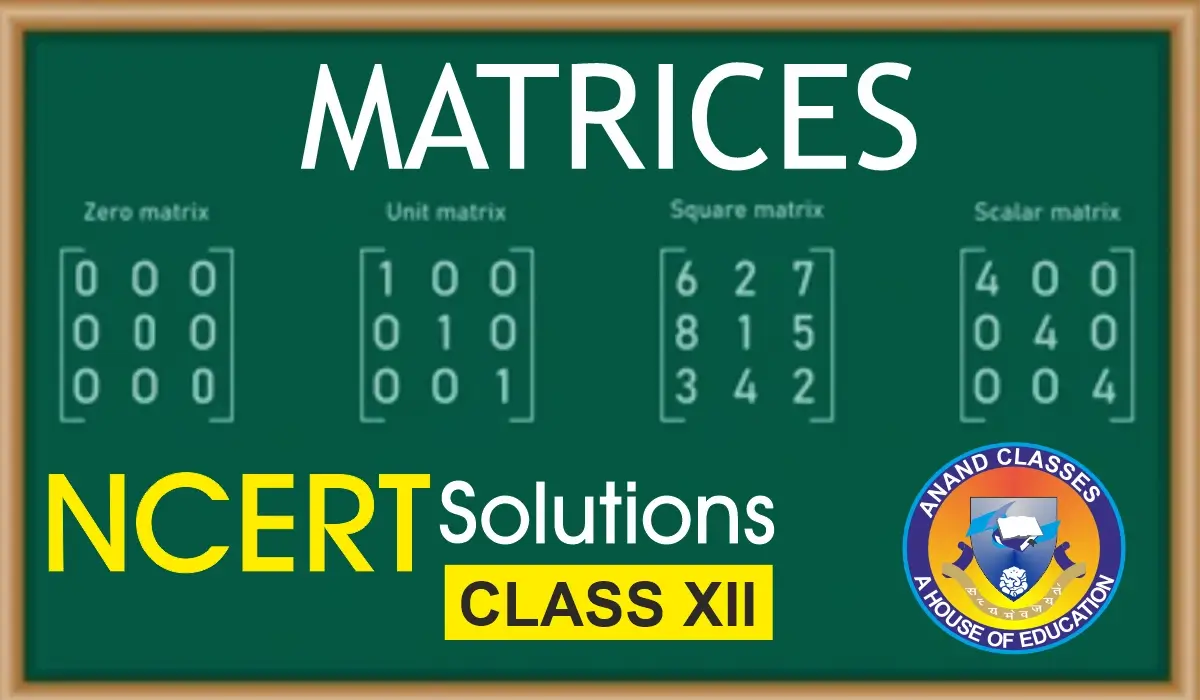Anand Classes provides comprehensive NEET Periodic Table PYQs with detailed solutions and practice MCQs in PDF format to help students prepare effectively for their medical entrance exam. The study material includes important questions from previous years, solved examples, and additional practice sets to strengthen concepts related to the periodic table and classification of elements. This resource is designed to help students revise, practice, and score better in the NEET exam with ease. Click the print button to download study material and notes.
AIPMT 2007 – Periodic Table & Classification of Elements (Ionization Enthalpy Trend)
NEET Q.1 : Which of the following electronic configuration of an atom has the lowest ionisation enthalpy?
(a) $1s^2 \, 2s^2 \, 2p^5$
(b) $1s^2 \, 2s^2 \, 2p^3$
(c) $1s^2 \, 2s^2 \, 2p^5 \, 3s^1$
(d) $1s^2 \, 2s^2 \, 2p^6$
[CBSE AIPMT 2007]
Answer : Correct Option: (c)
The given options represent different electronic configurations.
- Option (a) $1s^2 \, 2s^2 \, 2p^5$ corresponds to fluorine, which has a stable halogen configuration with high ionisation enthalpy.
- Option (b) $1s^2 \, 2s^2 \, 2p^3$ corresponds to nitrogen, which has a half-filled stable $p$-subshell, giving it higher ionisation enthalpy.
- Option (d) $1s^2 \, 2s^2 \, 2p^6$ corresponds to neon, a noble gas with completely filled shells, hence the highest ionisation enthalpy among these.
Now, consider option (c):
$$1s^2 \, 2s^2 \, 2p^5 \, 3s^1$$
This configuration is unstable because after the $2p^5$ subshell, there is an extra single electron in the $3s$ orbital. Such an outermost electron is weakly held by the nucleus, being in a higher energy shell and shielded by inner electrons.
As a result, less energy is required to remove this electron compared to the stable configurations in the other options.
This is why option (c) has the lowest ionisation enthalpy, a concept frequently tested in NEET PYQs Chapterwise Solutions for Periodic Table Properties. For NCERT Solutions, also visit at menu above.
📝 Concept Takeaway
- Atoms with completely filled or half-filled subshells have higher ionisation enthalpy because they are more stable.
- Atoms with an extra single electron in a new orbital (like $3s^1$ here) have very low ionisation enthalpy, since removing that electron increases stability.
- Key idea: Unstable configurations → lower ionisation enthalpy → easier to lose an electron.
AIPMT 2007 – Periodic Table & Classification of Elements (Isoelectronic Species and Ionic Sizes Trend)
NEET Q.2 : Identify the correct order of the size of the following.
(a) $Ca^{2+} < K^+ < Ar < S^{2-} < Cl^-$
(b) $Ca^{2+} < K^+ < Ar < Cl^- < S^{2-}$
(c) $Ar < Ca^{2+} < K^+ < Cl^- < S^{2-}$
(d) $Ca^{2+} < Ar < K^+ < Cl^- < S^{2-}$
[CBSE AIPMT 2007]
Answer : Correct Option: (b)
Step 1: Concept of ionic size
- A cation ($Ca^{2+}, K^+$) is always smaller than its parent atom because it loses electrons, reducing repulsion among electrons.
- An anion ($Cl^-, S^{2-}$) is always larger than its parent atom because it gains electrons, increasing repulsion among electrons.
Step 2: Recognising isoelectronic species
The given species are isoelectronic (all have 18 electrons):
- $Ca^{2+}$ → Atomic number 20 → loses 2 electrons → 18 e⁻
- $K^+$ → Atomic number 19 → loses 1 electron → 18 e⁻
- $Ar$ → Atomic number 18 → neutral → 18 e⁻
- $Cl^-$ → Atomic number 17 → gains 1 electron → 18 e⁻
- $S^{2-}$ → Atomic number 16 → gains 2 electrons → 18 e⁻
Step 3: Rule for isoelectronic species
For isoelectronic species:
$$\text{Ionic radius} \propto \frac{1}{\text{Atomic number}}$$
Thus, higher the nuclear charge (atomic number), stronger the attraction → smaller radius.
Step 4: Order by atomic number
- $Ca^{2+}$ → Z = 20 → smallest size
- $K^+$ → Z = 19
- $Ar$ → Z = 18
- $Cl^-$ → Z = 17
- $S^{2-}$ → Z = 16 → largest size
So the correct order of increasing size is:
$$Ca^{2+} < K^+ < Ar < Cl^- < S^{2-}$$
This matches option (b), as also highlighted in NEET PYQs Chapterwise Solutions for Periodic Table Properties. For NCERT Solutions, also visit at menu above.
📝 Concept Takeaway
- Cations are smaller than their parent atoms due to loss of electrons.
- Anions are larger than their parent atoms due to gain of electrons.
- For isoelectronic species, ionic size decreases as atomic number increases.
AIPMT 2004 – Periodic Table & Classification of Elements (Ionic radii and effective nuclear charge)
NEET Q.3 : Ionic radii are
(a) inversely proportional to effective nuclear charge
(b) inversely proportional to square of effective nuclear charge
(c) directly proportional to effective nuclear charge
(d) directly proportional to square of effective nuclear charge
[CBSE AIPMT 2004]
Answer : Correct Option: (a)
Step 1: Relation between ionic radius and effective nuclear charge
The size of an ion depends on the balance between:
- Nuclear charge ($Z$) pulling electrons inward, and
- Electron–electron repulsion pushing outward.
The effective nuclear charge ($Z_\text{eff}$) is the net positive charge experienced by valence electrons after accounting for shielding.
Mathematically,
$$Z_\text{eff} = Z – \sigma$$
where $\sigma$ is the screening constant.
Step 2: Proportionality
When $Z_\text{eff}$ increases, the nucleus pulls the electrons closer, reducing the ionic radius.
Thus:
$$\text{Ionic radius} \propto \frac{1}{Z_\text{eff}}$$
This matches option (a).
Step 3: Screening constant effect
- If the number of inner-shell or penultimate electrons increases, shielding increases.
- This lowers $Z_\text{eff}$, leading to a larger ionic radius.
- Conversely, higher $Z_\text{eff}$ results in a smaller ionic size.
Hence, ionic radii are inversely proportional to effective nuclear charge, a trend seen repeatedly in NEET PYQs Chapterwise Solutions for Periodic Table Properties, so students download pdf for better learning. For NCERT Solutions, also visit at menu above.
📝 Concept Takeaway
- Ionic radius decreases as effective nuclear charge ($Z_\text{eff}$) increases.
- Screening effect reduces $Z_\text{eff}$, leading to a larger ionic radius.
- Formula: $Z_\text{eff} = Z – \sigma$, where $\sigma$ depends on shielding electrons.
AIPMT 2003 – Periodic Table & Classification of Elements (Isoelectronic Species and Ionic Sizes Trend)
NEET Q.4 : The ions $O^{2-}, F^-, Na^+, Mg^{2+}, \text{and } Al^{3+}$ are isoelectronic. Their ionic radii show
(a) an increase from $O^{2-}$ to $F^-$ and then decrease from $Na^+$ to $Al^{3+}$
(b) a decrease from $O^{2-}$ to $F^-$ and then increase from $Na^+$ to $Al^{3+}$
(c) a significant increase from $O^{2-}$ to $Al^{3+}$
(d) a significant decrease from $O^{2-}$ to $Al^{3+}$
[CBSE AIPMT 2003]
Answer : Correct Option: (d)
Step 1: Isoelectronic species
All given ions ($O^{2-}, F^-, Na^+, Mg^{2+}, Al^{3+}$) have the same number of electrons (10 electrons each), so they are isoelectronic.
Step 2: Effective nuclear charge
For isoelectronic species:
$$\text{Ionic radius} \propto \frac{1}{Z_\text{eff}}$$
where
$$Z_\text{eff} = Z – \sigma$$
As the atomic number increases, nuclear attraction increases for the same number of electrons, so the ionic radius decreases.
Step 3: Effect of charge
- More negative charge → larger ionic radius (electrons repel each other more).
- More positive charge → smaller ionic radius (stronger pull of nucleus on fewer electrons).
Step 4: Applying to given ions
Order of decreasing size:
$$O^{2-} > F^- > Na^+ > Mg^{2+} > Al^{3+}$$
Thus, ionic radii decrease significantly from $O^{2-}$ to $Al^{3+}$.
This is exactly what is tested in NEET PYQs Chapterwise Solutions for Periodic Table Properties.
📝 Concept Takeaway
- Isoelectronic species: same electrons, different nuclear charge.
- Higher $Z_\text{eff}$ → smaller ionic radius.
- Anions ($-$ charge) are larger, cations ($+$ charge) are smaller.
- Correct trend: $O^{2-} > F^- > Na^+ > Mg^{2+} > Al^{3+}$.
AIPMT 2002 – Periodic Table & Classification of Elements (Periodic Table Properties)
NEET Q.5 : Which of the following order is wrong?
(a) $NH_3 < PH_3 < AsH_3$ – Acidic strength
(b) $Li < Be < B < C$ – 1st Ionisation potential
(c) $Al_2O_3 < MgO < Na_2O < K_2O$ – Basic character
(d) $Li^+ < Na^+ < K^+ < Cs^+$ – Ionic radius
[CBSE AIPMT 2002]
Answer : Correct Option: (b)
Step 1: General trend of ionisation potential
- Across a period (left to right), the first ionisation potential increases because atomic size decreases and nuclear charge increases.
- Hence, in the second period:
$$Li < Be < B < C$$ would be expected.
Step 2: Exception between Be and B
- Beryllium (Be): configuration = $1s^2 \, 2s^2$ → stable, completely filled $2s$ subshell.
- Boron (B): configuration = $1s^2 \, 2s^2 \, 2p^1$ → less stable, easier to remove the outer electron.
- As a result:
$$I.P.(Be) > I.P.(B)$$
Step 3: Corrected order
The actual first ionisation potential order is:
$$Li < B < Be < C$$
Thus, the given order in option (b) is wrong, which makes it the correct answer to the question.
This exception-based question is a classic example in NEET PYQs Chapterwise and Topicwise pdf Solutions for Chemistry Periodic Table Properties.
📝 Concept Takeaway
- Across a period: ionisation potential increases.
- Exception: $Be$ has higher ionisation potential than $B$ due to stable $2s^2$ configuration.
- Correct order: $Li < B < Be < C$.
📚 Buy Study Material & Join Our Coaching
For premium study materials specially designed for JEE, NEET, NDA, and CBSE/ICSE Classes, visit our official study material portal:
👉 https://publishers.anandclasses.co.in/
For NDA Study Material, Click Here
For SSC Study Material, Click Here
To enroll in our offline or online coaching programs, visit our coaching center website:
👉 https://anandclasses.co.in/
📞 Call us directly at: +91-94631-38669
💬 WhatsApp Us Instantly
Need quick assistance or want to inquire about classes and materials?
📲 Click below to chat instantly on WhatsApp:
👉 Chat on WhatsApp
🎥 Watch Video Lectures
Get access to high-quality video lessons, concept explainers, and revision tips by subscribing to our official YouTube channel:
👉 Neeraj Anand Classes – YouTube Channel


